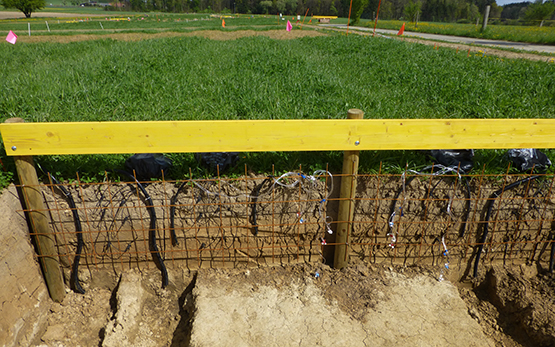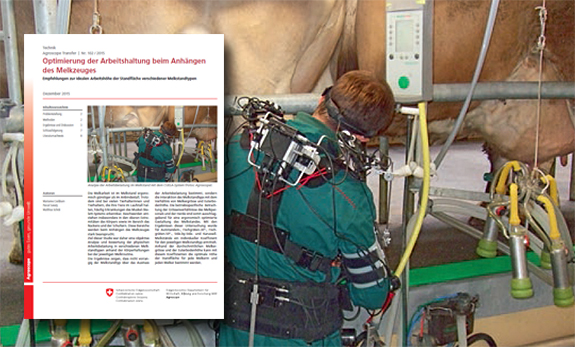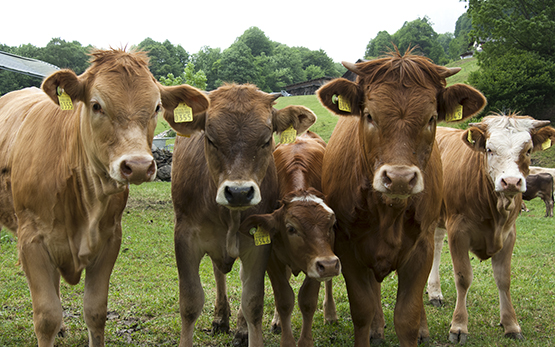Barmettler E., van der Heijden M., Rösch A., Egli-Künzler L., Dubuis P.-H., Mackie-Haas K., Lutz S., Bucheli T.
Double the trouble: High levels of both synthetic pesticides and copper in vineyard soils.
Environmental Pollution, 375, 2025, Article 126356.
Cerri M., Wille F., Arn S., Bucheli T., Widmer F., Werz R., McNeill K., Manfrin A., Sander M.
An analytical workflow to quantify biodegradable polyesters in soils and its application to incubation experiments.
Environmental Science & Technology, 59, (16), 2025, 8108-8118.
Cornelissen G., Briels N., Bucheli T., Estoppey N., Gredelj A., Hagemann N., Lerch S., Lotz S., Rasse D., Schmidt H.-P., Sormo E., Arp H. P. H.
A virtuous cycle of phytoremediation, pyrolysis, and biochar applications toward safe PFAS levels in soil, feed, and food.
Journal of Agricultural and Food Chemistry, 73, (6), 2025, 3283-3285.
Hilber I., Hagemann N., de la Rosa J. M., Knicker H., Bucheli T., Schmidt H.-P.
Biochar production from plastic-contaminated biomass.
Global Change Biology Bioenergy, 16, (11), 2024, Article e70005.
Grafmüller J., Rathnayake Mudiyanselage D. C., Hagemann N., Bucheli T., Schmidt H.-P.
Biochars from chlorine-rich feedstock are low in polychlorinated dioxins, furans and biphenyls.
Journal of Analytical and Applied Pyrolysis, 183, 2024, Article 106746.
Lotz S., Bucheli T., Schmidt H.-P., Hagemann N.
Quantification of soil organic carbon: the challenge of biochar-induced spatial heterogeneity.
Frontiers in Climate, 6, 2024, Article 1344524.
Nybom I., Bucheli T., Garland G.
Antibiotics uptake from soil and translocation in the plants: Meta-analysis.
Chimia, 78, (4), 2024, 209-214.
Mangold S., Hornák K., Bartolome N., Hilber I., Bucheli T.
Concomitant determination of pesticides in soil and drainage water over a potato cropping season reveal dissipations largely in accordance with respective models.
Science of the Total Environment, 945, 2024, 173971.
Liang X., Bucheli T., Christensen J. H., Nielsen N. J.
An innovative approach for analyzing phytotoxins as micropollutants in the environment.
Chimia, 78, (4), 2024, 263.
Peña B., Sosa D., Hilber I., Escobar A., Bucheli T.
Validation of a modified QuEChERS method for the quantification of residues of currently used pesticides in Cuban agricultural soils, using gas chromatography tandem mass spectrometry.
Environmental Science and Pollution Research, 31, 2024, 33623-33637.
Buss W., Wurzer C., Shepherd J. G., Bucheli T.
Organic contaminants in biochar.
Dans: Biochar for Environmental Management: Science, Technology and Implementation. 3rd ed., Ed. J. Lehmann & S. Joseph, Routledge. 2024, 559-587.
Rathnayake D., Schmidt H.-P., Leifeld J., Bürge D., Bucheli T., Hagemann N.
Quantifying soil organic carbon after biochar application: How to avoid (the risk of) counting CDR twice?
Hilber I., Bahena‑Juárez F., Chiaia‑Hernández A.C., Elgueta S., Escobar‑Medina A., Friedrich K., González‑Curbelo M.A., Grob Y., Martín‑Fleitas M., Miglioranza K.S.B., Peña‑Suárez B., Pérez‑Consuegra N., Ramírez‑Muñoz F., Sosa‑Pacheco D., Bucheli T.
Pesticides in soil, groundwater and food in Latin America as part of one health.
Environmental Science and Pollution Research, 31, 2024, 14333-14345.
Bucheli T., Barmettler E., Bartolome N., Hilber I., Hornák K., Meuli R. G., Reininger V., Riedo J., Rösch A., Sutter P., van der Heijden M., Wächter D., Walder F.
Pesticides in agricultural soils: Major findings from various monitoring campaigns in Switzerland.
Chimia, 77, (11), 2023, 750-757.
Wettstein F., Sutter P., Bucheli T.
Analysis of pesticides in soil: Observations from one year routine.
Dans: 5th Swiss Pesticide Residue Workshop. 22 November, Pratteln. 2023, 1-24.
Rösch A., Wettstein F., Wächter D., Reininger V., Meuli R. G., Bucheli T.
A multi‑residue method for trace analysis of pesticides in soils with special emphasis on rigorous quality control.
Analytical and Bioanalytical Chemistry, 415, (24), 2023, 6009-6025.
Riedo J., Wächter D., Gubler A., Wettstein F., Meuli R. G., Bucheli T.
Pesticide residues in agricultural soils in light of their on-farm application history.
Environmental Pollution, 331, 2023, 1-8.
Rathnayake D., Schmidt H.-P., Leifeld J., Mayer J., Epper C., Bucheli T., Hagemann N.
Biochar from animal manure: A critical assessment on technical feasibility, economic viability, and ecological impact.
Global Change Biology Bioenergy, 15, (9), 2023, 1078-1104.
Bucheli T., Hilber Schöb I., Schmidt H.-P., Hagemann N.
Polyzyklische aromatische Kohlenwasserstoffe (PAK) in Pflanzenkohle: Früher unbekannt – heute bestbekannt.
Dans: Pflanzenkohle-Fachtagung 2023. 16. Juni, Ed. Charnet – Schweizer Fachverband für Pflanzenkohle, Brugg-Windisch. 2023.
Riedo J., Yokota A., Walther B., Bartolomé N., van der Heijden M., Bucheli T., Walder F.
Temporal dynamics of total and bioavailable fungicide concentrations in soil and their effect upon nine soil microbial markers.
Science of the Total Environment, 878, 2023, 1-10.









